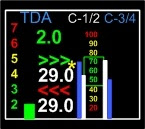I have an IO-375 engine with dual P-Mags. On two different occasions my timing has been lost on one of the two P-Mags. Doing a mag check causes the engine to stop when that mag is selected. The engine stopped because the mags were no longer timed correctly - one was firing about 60 degrees later than the other mag. This happened because (as I found out after talking to E-Mags) running the electrical system on a battery charger while I was learning the avionics scrambles the timing. The P-Mag manual warns about this. I reset the timing and all was well for the past 3 or 4 flights.
Today it failed again at run-up. I have not done anything including using a charger since the last failure. The timing of one mag is off about 60 degrees, just like before.
Has anyone had this problem? I will give E-Mags a call tomorrow but I thought I'd see if anyone else has had this problem.
Thanks!
Today it failed again at run-up. I have not done anything including using a charger since the last failure. The timing of one mag is off about 60 degrees, just like before.
Has anyone had this problem? I will give E-Mags a call tomorrow but I thought I'd see if anyone else has had this problem.
Thanks!






